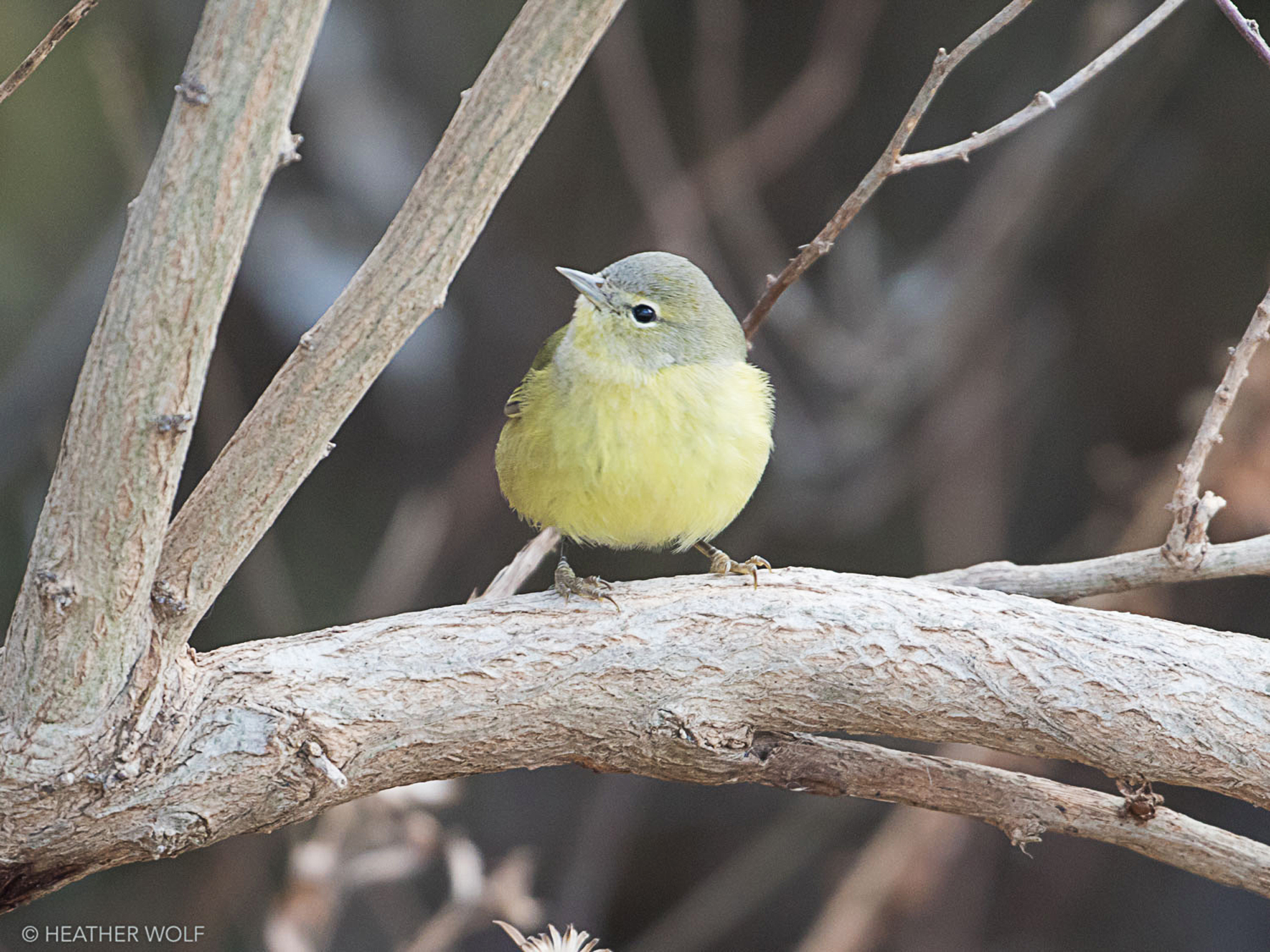Brooklyn Bird Watch: March 24
Orange-crowned Warbler. Scientific Name: Leiothlypis celata

Today, Brooklyn Bird Watch features a Heather Wolf photo of the Orange-crowned Warbler, seen in Brooklyn Bridge Park. The Cornell Lab reminds us that this bird is not the most “dazzling” of the warbler family. Looking at Ms Wolf’s photo one might ask, and it’s a good question; “Where is the orange crown?” The orange crown is usually only visible when the bird is excited and raises its head feathers.
We are told that the song patterns of the male Orange-crowned Warbler are so varied that the male can be distinguished from the female via its song. Orange-crowned Warblers have what’s called “song neighborhoods.” A “song neighborhood” is where several birds in adjacent territories learn and mimic each other’s songs. These songs can persist for years.
The Orange-crowned Warblers begin their spring migration earlier, stay later on the breeding grounds, and winter farther north than most other warblers. Food rather than the length of the day length seems to drive their migratory calendar, as it has been documented that they begin to leave the breeding grounds when the cold or drought limit the supplies of insects.

Brooklyn Boro
View MoreNew York City’s most populous borough, Brooklyn, is home to nearly 2.6 million residents. If Brooklyn were an independent city it would be the fourth largest city in the United States. While Brooklyn has become the epitome of ‘cool and hip’ in recent years, for those that were born here, raised families here and improved communities over the years, Brooklyn has never been ‘uncool’.